Repeated Apparitions
Repeated Apparitions is a programme of experimental screenings, performances and events that muse over repetitive cycles of oppression and their social invisibility and normalisation.
Through a shared exploration of radical images, wild experimental sounds and evocative texts, the programme looks at how repetition can be used to create processes of reparation and renewal, disrupt the past and imagine new realities. Repeated Apparitions is an offering that hopes to invite reflections on how to confront and destabilise cyclical systems of oppression and offer a space of collective imagining of an alternative future: one of rupture, visibility and new continuities.
This event is captioned.
Curated by Care-fuffle collective
Register now to watch the programme online
Event will be live between 6.30 - 8.30pm on 9th January 2022
Sunday 9th January - short film running order
- Suspiration
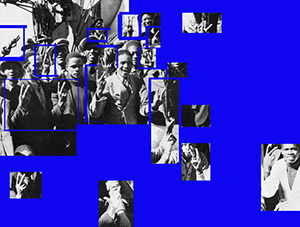 Suspiration
Suspiration
Dir. Camara Taylor | UK | 2021 | 23mins
Suspiration, [noun] - a long deep breath or a sigh. The film is a collage of images, newsreels, bodily gestures, texts and sounds collected over four years. The structure and the score of the film are comprised of the body’s audible release of liquid and air; enmeshed utterances and ir/regular vibrations. The film brings false promises made by the United Kingdom to the surface with pieces of news footage and a spoken testimony describing racism in the UK. Amongst this bleakness, moments of beauty shine through, indicating the possibility for reassurance and hope.
- The Island Is No Home
-
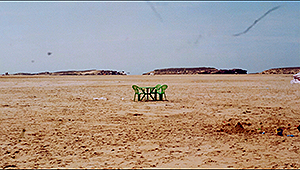 The Island Is No Home
The Island Is No HomeDir. Shamica Ruddock | UK | 2021 | 2mins
A short reflection on displacement, diaspora and communal relations to land influenced by the writings of Homi K. Bhabha, Grada Kilomba and Claudia Rankine amongst others. Thinking often about the way familiarity with a landscape contributes in the act of home-making, and the horizon as implying always something further and beyond, this work momentarily contemplates from a place of being without belonging. The Island is No Home uses text, sound and digitally manipulated 35mm.
- COYOLXAUHQUI
-
 COYOLXAUHQUI
COYOLXAUHQUI Dir. Colectivo Los Ingrávidos | Mexico | 2016 | 10mins
The film recasts the mythical dismemberment of the Aztec Moon goddess Coyolxauhqui by her brother Huitzilopochtli, the deity of war, the Sun and human sacrifice. The film is a poem of perception, one that unveils how contemporary Mexican femicide is linked to a patriarchal history with roots in deeper cultural constructs.
- So Much I Want to Say
-
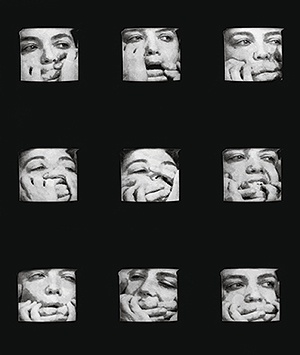 So Much I Want to Say
So Much I Want to SayDir. Mona Hatoum | UK | 983, 5’
When MONA HATOUM was 23, she came to England on a visit and stayed on when the outbreak of civil war in Lebanon prevented her returning. While the conflict was raging during the seventies and eighties, she feared for her family’s safety and rarely saw them. For long periods it was impossible to phone them, or even to be sure they would receive her letters. Meanwhile she was living in London, effectively an exile. Her video, So much I want to say, was made during this time. A series of still images unfolds (one every eight seconds), revealing the face of a woman (the artist) filling the screen. Two male hands repeatedly gag the woman and obscure parts of her face, sometimes covering it completely. On the sound-track, repeated over and over again, are the words “so much I want to say” spoken by a female (the artist’s) voice.
- I Dreamed I Called You On The Telephone
-
 I Dreamed I Called You On The Telephone
I Dreamed I Called You On The TelephoneDir. Bryony Gillard | UK | 2021 | 25mins
I Dreamed I Called You On The Telephone is a moving image work which considers loss, illness and time under late capitalism. At its core is an excerpt from the poet Anne Boyer’s autopathography, The Undying (2019), a memoir that brutally tracks her experiences of cancer and the cancer industry in the USA.
Reconfigured in the context of I dreamed I called you on the telephone, Boyer’s call to “weaponise” one’s sick body against “what you hate and what hates you” is spoken as a monologue by the artist’s sister, an NHS midwife. With a range of protagonists and collaborators, including a fox, a midwife, a sewage works and a countertenor, the work explores ideas around bodily autonomy, grief and practices of care and resistance.Contributors and readers: Ella Golt, Becky Gray, Nik Rawlings, D-M Withers, Anna Clawson and Nicole Ward.
Poem by Bryony Gillard
Disordering question of form
1
Two fingers percuss
the size,
consistency and borders,
presence
or absence of fluid.2
We have learnt [from our mothers]
that silence
without agency is oppressive,particularly given the material conditions
of the lives in question.3
Disassembly
Breaking open
like an Easter eggsound waves transduce
internal cavities in light and shadow
On Screen4
Mum Who Can Hear Organs
is tortured by the sound of her
eyeballs moving - Silence
-
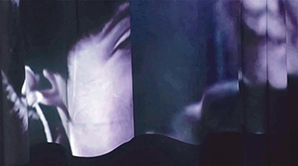 Silence
SilenceDir. Nina Thomas | UK | 2021 | 8mins
Explores silence, deaf experience, and language. It includes references to Alexander Graham Bell, and oralism – an approach to education which assumes speech to be superior to sign language and which forces deaf children to lip read and speak rather than sign.
Silence was commissioned by LUX as part of their ongoing series exploring access
in artists’ moving image
The short programme will be accompanied by a live-writing performance by Mengqi He.
Mengqi He is a bilingual Chinese performer currently based in London, United Kingdom. Her creative practice focuses on connecting traditional Chinese culture from a female perspective and breaking the stereotype of the female image with the audience by spoken word, body language, and Chinese calligraphy. Her recent credits include Good Citizens Don’t Think (Pleasance, Fringe Future Festival, 2021), Paper Daughter (New Earth Theatre, 2020), Oracles in Sepia (Compass Presents,2020).
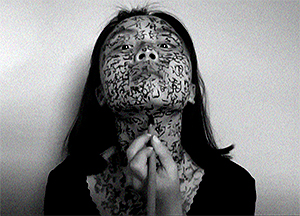 Dark is the Night:
Dark is the Night:
Inspired by Artist Mona Hatoum’s So Much I Want to Say. This Chinese Calligraphy performance explores the cultural displacement of being a first generation immigrant from mainland China, the language barriers between Chinese mandarin and British English, the culture differences between the east and west, and the disconnections between its people.

